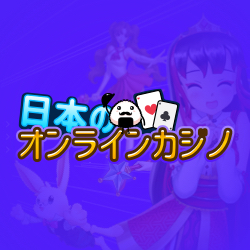Jump Scares are more Effective in Games than Films and Here’s Why
Jump-scares get a lot of flack in horror films and are slated for being used as a cheap gimmick, scaring viewers for no other reason than to give them a quick, pointless fright, and there is no denying that this is true. Horror films are supposed to be scary and many horror film fans, and critics alike, feel that it should be a combination of the atmosphere, environments, story and characters that give a horror film its fear factor, not a sudden loud burst of sound followed by a creepy image; it is not even the image that makes the audience jump, but the sudden loud sound. Imagine being out and about and you suddenly jump at hearing a car back-fire – it was the loud noise that made you jump, and it is just the same with jump-scares in horror films, only serving to take a person out of the experience as opposed to enhancing it, as they turn away and laugh in embarrassment.
A good horror film is one that builds up tension and gives a good payoff, making for a more memorable experience and one that stays with you for weeks afterwards. With the many jump-scares being used in films today, it has led to viewers watching a film and looking for when a jump-scare is about to happen, as opposed to allowing themselves to become absorbed in the film and caring about the characters and story – usually a film littered with jump-scares has weak characterisation and plot anyway. Because of this, it has now become easy to predict when a jump-scare is about to happen, and with so much focus being placed on crafting a good jump-scare, every other aspect of the film is usually lacking and so horror films just don’t seem as scary in the way that they used to be.
This is why jump-scares in horror games work far more effectively. It is a horror games length that gives it the advantage to having better jump-scares, allowing it time to set up the overall tone of the game – the story, connection to characters, setting – all whilst building tension and then scaring you when you are completely unawares. The length of a game then allows it time to reabsorb you into the world, rebuilding tension and scaring you several times over many hours. Over these several hours you become part of the world, part of the experience; games are great at immersing you in their world and making you care about characters whose lives are, essentially, in your hands. The interactivity a game offers is also an advantage, giving you the responsibility to make sure characters don’t die, and so there is an added sense of urgency when a game is suddenly building up to a scary moment and you just don’t know what is going to happen and when – it’s far less predictable because there are no set patterns in horror games that signify when a jump-scare is about to occur. Horror games require you to take action in order to save certain characters and as you are distracted by helping them – boo! – a jump-scare happens and it works; you are the one in control and the jump-scares in games feel more personal, because not only are they meant for the characters, they are also meant for you, to prevent you from helping them.
With films, you are just merely an observer, watching people’s dilemmas rather than taking part and so you have no choice in what to do. You are not in control of their situation, hence not responsible, and so there is no sense of urgency to save anyone, as you are helpless to do so – the characters work things out themselves and all you have to do is sit back, watch, and sigh with annoyance when they make obvious bad choices. All this watching is doing is giving you time to take notice of other aspects of the film, such as when the music changes or an ominous noise occurs, giving you time to work out when a jump-scare is about to happen and with the frequent use of jump-scares in horror films these days, it is easy to work out when one is coming. It is usually camera angles and a sudden drop in music that are the biggest give away’s for when a jump-scare is about to occur, and when it does, it just feels… meh, because you had time to predict when it would happen.
In horror games, with the various camera angles and often frantic pace of the action, and the fact that you are the one responsible for the characters’ lives, you are constantly kept on alert for danger and so you do not notice these things, therefore it is easier to be startled when a jump-scare occurs.
Even though jump-scares are seen as a negative aspect of many horror films – with many practically revolving around setting up jump-scares and lacking everything else – there is no denying that it is much easier to set up and execute a jump-scare in a game, whereby there is more time to concentrate on other aspects of the scenario and pulling you in to that scenario. Jump-scares are certainly more at home in horror games, and even though there is a call to calm down on their usage, admittedly it is fun to have a little shocking jolt now and again, but as with anything, moderation is the key.









